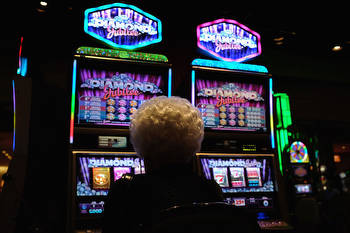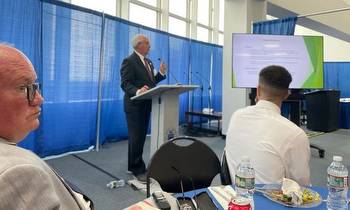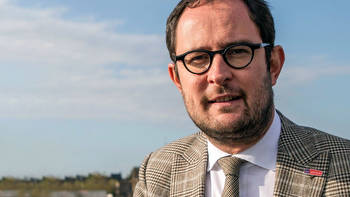New Data Show Enormous Growth Rate in Gambling Ads

It’s clear to anyone who watches television in a state where gambling is legal that gambling ads are becoming more common. But new numbers show just how quickly they have grown.
The cost of television ads for online gambling and gambling services jumped to $725 million in 2021, up from $292 million in 2020, according to Nielsen. To put that into context, gambling companies now spend three times as much on ads as cereal companies do.
And there’s still quite a bit of room to grow. Gambling-related ads are about 1% of the total TV ad market and are dwarfed by the auto industry, which spent $7.9 billion last year, according to Nielsen.
Spending is bound to rise more this year as gambling expands into new markets with enormous TV audiences and expensive ad rates.
Gambling operators are fighting for market share in a growing number of states. A 2018 Supreme Court decision overturned a federal law that had blocked sports gambling, but legalization is up to each state. So far, 30 states and Washington, D.C. have done so. Eleven of those, including Michigan and Connecticut, went live with online betting in 2021, according to news site sportshandle.com. Online sports gambling just became legal in New York, and analysts expect it to get a vote in California this year. It was approved in Florida last year, but betting has been held up by a court decision.
Online casino gambling on games like blackjack and digital slot machines is also becoming more popular, but it’s legal in fewer than a dozen states.
In several states, more than a dozen bookmakers are competing, and they want to stand out immediately. Well-financed companies that can bankroll big media campaigns and give promotional offers to new bettors have a clear advantage. Four operators – DraftKings(ticker: DKNG), FanDuel, MGM Resorts International(MGM), and Caesars Entertainment(CZR) – accounted for 93% of the TV ad spending in 2021, according to Nielsen.
Beneficiaries include all sorts of media companies, from local TV station operators like Sinclair Broadcast Group(SBGI) to national players like ViacomFox Corp.(FOX), which has common ownership with Barron’s publisher News Corp, has also benefited.
The spending appears to have paid off in terms of user growth for gambling companies. Morgan Stanley analyst Thomas Allen found that in every state that releases data, the top five operators have at least 82% market share. In Michigan, where 14 operators are fighting for share, the top five have 90%.
“Though there is a lot negative written about the levels of marketing and promotional spending, this has driven a very concentrated market that only players of scale can really compete in,” Allen wrote.
All that spending does tend to hurt margins, and make it hard for operators to make money in the early years. DraftKings is expected to lose $2.45 a share this year even as its revenue booms, according to FactSet. But operators say it takes two to three years for each state to become profitable, so as more state markets mature, they’ll be able to earn more. DraftKings announced positive results on one measure of gross profit in New Jersey in 2020, two years after launch, for instance.
In an interview, Allen said that operators in mature gambling markets like the United Kingdom make adjusted earnings margins of 25%, somewhere between successful media companies and top tech names.
The television ads, however, are also starting to catch the eye of regulators and lawmakers, who are concerned about the messages they’re sending.
“It’s inundating television, it’s crazy,” said New Jersey Assemblyman Ralph Caputo, who is chairman of the state’s Committee on Tourism, Gaming and the Arts. Caputo, a former casino executive, says he thinks it’s time to consider limits on the ads.
Some researchers in the field are also growing concerned about the seeming ubiquity of the ads. If gambling is becoming as American as breakfast cereal on TV, it might start reaching consumers of that product too.
Lia Nower, Director of the Center for Gambling Studies at Rutgers University, said that research has shown children are noticing the messages. “Very young children can remember the gambling terms from these ads, can sort of replicate the excitement in the ads and indicate as soon as they can, they want to begin placing bets,” Nower says.
Daniel Umfleet, the CEO of Kindbridge Behavioral Health, a telehealth company that specializes in counseling for gambling addiction, said in an interview that the ubiquity of gambling messages is “one of the most frequently discussed topics as of late” among the people he works with.
“We do see a number of folks who have been gamble-free for a long time – for up to eight years, in some cases – and the introduction of the products into the space, where you’re getting bombarded with advertising for free for free bets, has caused quite a few of them to relapse and sort of break their sobriety from gambling,” he said.
Industry players recognize there’s been some backlash.
“They’re fair concerns, and certainly something that the industry is well aware of, paying close attention to,” said Casey Clark, senior vice president of strategic communications at the American Gaming Association, an industry trade group. Gambling companies have spent heavily on responsible gambling campaigns, including TV advertising, he notes. Companies are policing themselves, he said. The gaming association has a responsible marketing code with a list of rules including that ads should not be “designed to appeal primarily to those below the legal age for sports wagering.” People can make formal complaints to the association through its website, and a board made up of “two independent co-chairs and five AGA member representatives” may then take action.
The lone complaint currently posted on the website was submitted last year by Keith Whyte, the executive director of the National Council on Problem Gambling. It regards an ad from Penn National Gaming(PENN) over its “Can’t Lose Parlay” promotion, which Whyte argued implied a guaranteed win.
The company responded that the ad was no longer running and argued that it was a responsible ad because the term “can’t lose” was “obviously satirical” and that in a previous marketing campaign the company had made it clear that there was no guarantee of winning.
Some leagues have imposed limits too, with the NFL allowing a maximum of six ads per game.
Clark said advertising has several benefits beyond helping the market share of the advertiser. For one thing, it helps inform gamblers that there are legal options for betting in their state.
“What we learned early on in our research, when legal sports betting was just starting to roll out was people were unclear as to what was legal and what wasn’t,” he said. “So I think advertising does play an important role in drawing consumers away from the illegal market and toward the legal one.”
Write to Avi Salzman at avi.salzman@barrons.com


































